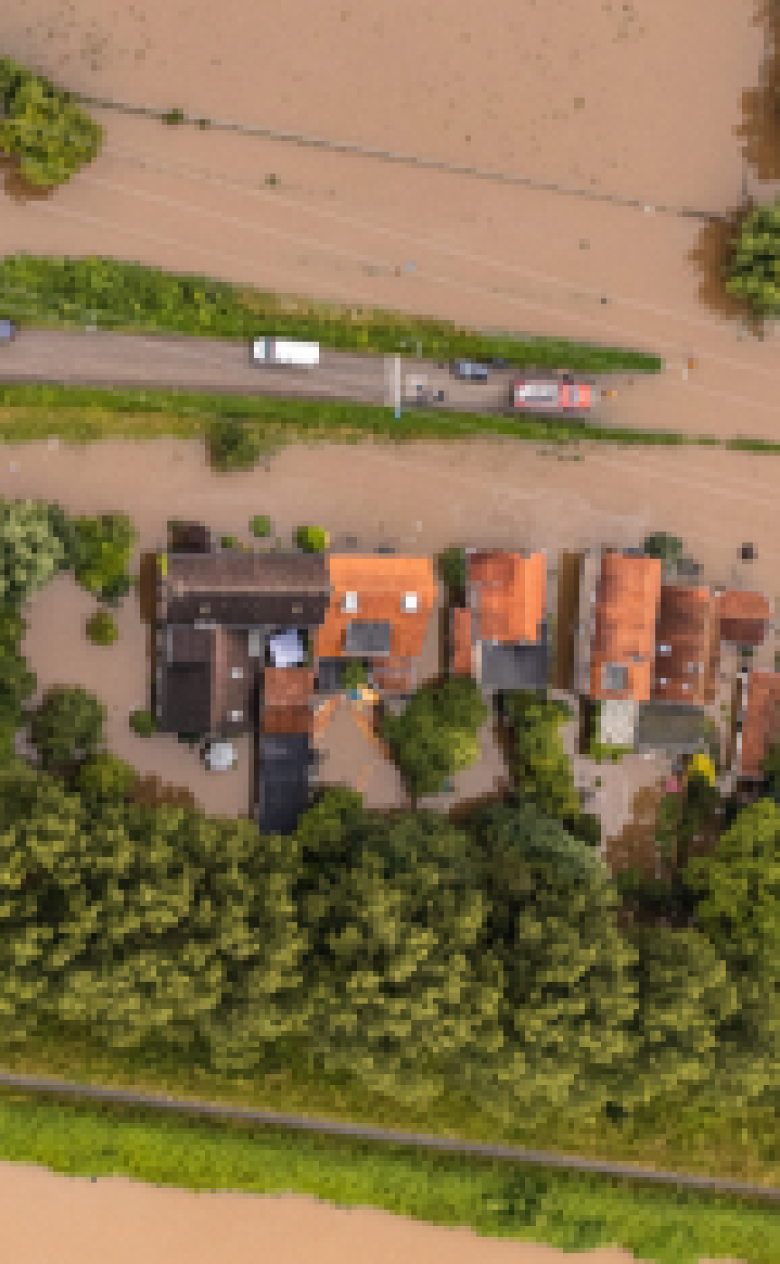Clear information allows for more flood risk preparedness
Residents in Limburg were not all well informed about possible flood risks and some were very surprised that floods could occur to this extent in their hometown. That is one of the conclusions of a study conducted by the Vrije Universiteit van Amsterdam and Deltares, following the July 2021 flood. Increasing risk awareness can lead citizens (and also governments) to be better prepared for floods, which can reduce damage and casualties in future events.

Key points from this study, led by VU Amsterdam and Deltares in collaboration with TU Delft, HKV Line and Water and Kantar Public
- Some of the residents were surprised that floods could occur to this extent in their hometown. Floods along the Meuse tributaries were very dangerous and caused a lot of stress. Most of the damage occurred along the Geul.
- Clear, timely and more location-specific information on flood risk and action perspectives can increase citizens' risk awareness. Increasing risk awareness can lead to citizens being better prepared for floods, thus reducing damage and casualties in future events. People who know they can experience flooding are often better prepared (see figure).
- How to improve society's recovery after a disaster is a subject for further research.
Lessons for the future
To draw lessons for the future from the event in Limburg, a survey of households and businesses in the flooded areas and areas that have faced a major flood threat was launched in early 2022. For this purpose, a questionnaire was sent to 11 thousand addresses.
About half of these addresses were in the flooded area, while the other half were in an area that was not directly flooded, but where an emergency order due to evacuation and disaster tourism was in force. A total of 72 businesses and 1,513 households completed the questionnaire. The survey yields valuable information on the effectiveness of measures and warnings, evacuation behaviour, damage and damage settlement.
High water levels along the Geul
The water caused a lot of damage particularly along the Geul. Most of the flooded households in the survey are in this region. Here, it appears that in many cases the water entered the houses at high speed, and in a third of the affected households along the Geul, the water even reached its highest point within one hour. The rapid rise of the water and that it could get so high took many residents in this region by surprise, which meant that preventive protective measures were often not possible.
Kymo Slager (Deltares researcher): "Floods caused by extreme rain - especially in stream valleys - can never be completely prevented and the likelihood of extreme rainfall is only increasing due to climate change. We therefore need better cooperation in awareness raising and response in case it happens, and ensure that recovery from a flood disaster is well organised for all those affected.
Flood damage and compensation
Flood damage appears higher along the Geul (and also the Roer) than along the Meuse, with average damages to homes and household goods of €65,000 and €17,000 respectively. Households expect to be compensated about 60 per cent of the total damage by the government or insurers. Insurers had paid out more than half of the compensation within six months of the flood. From the Disaster Damage Compensation Act (WTS), the government had paid out about a quarter of the compensation to households after six months.
Warnings, evacuation and flood measures
Up to 45 per cent of residents in the threatened area report that they did not receive timely flood warnings. Evacuation recommendations contributed significantly to residents' decision to evacuate: where of the warned group, over 80 per cent evacuated, of the un-warned group, about 20 per cent proceeded to evacuate. More than three-quarters of evacuated residents were able to stay with friends and family. Central shelters played only a minor role. Less than 5 per cent of the evacuees were accommodated here.
About half of the alerted households were able to move their car to a safe place, compared to a quarter for the group that was not alerted. Other measures, such as moving possessions up to a higher elevation or water-resistant flooring within the home also managed to reduce flood damage by 20 to 50 per cent.
Placing sandbags and water-resistant bulkheads did not always reduce damage, in two-thirds of cases the bulkheads and sandbags were found to not be high or strong enough to hold back the water.
VU professor and research leader Wouter Botzen: “These results underline that damage control measures taken by households can play an important role in reducing flood risks."

